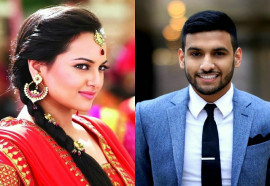
Quite ironical, this. Increasingly, actors of Indian origin have been portraying Pakistani characters in high-profile international movies and TV series. The prevalence of Pakistan’s terrorist sub-structure has served as the backdrop of countless thrillers and social dramas. Piquantly, artistes of Indian origin have no compunctions in essaying Pakistanis, their characterisations ranging from the sympathetic or oozing myriad shades of grey and black.
Lunchbox star, Nimrat Kaur, was seen as Tasneem Kureshi, a high-level operative within an intelligence agency, in the fourth season of the American series, “Homeland”. In the same show, the Life of Pi actor, Suraj Sharma, played Aayan Ibrahim, a Pakistani medical student with terrorist links. As for the Slumdog Millionaire sensation, Dev Patel, he essayed a Pakistani teenager, Anwar Kharral, in the British drama, Skins. Kama Sutra actor, Naveen Andrews, in the 2013 film, Diana, played Pakistani doctor, Hasnat Khan, who it is believed, shared a special bond with the deceased Princess of Wales.
More recently, Rahul Khanna was snapped up to play an intelligence agency boss, Yousaf Rana, in the third season of “The Americans”. So what makes Indian actors (and not their Pakistani counterparts) front-runners to play Pakistani characters in globally watched projects? I believe it has to do with India’s robust image of being the largest producer of movies in the world.
For one, Pakistan is not seen as a movie-making nation, and the little that emerges is consumed only locally, resulting in no awareness outside its own domestic market. In India, there is a virtual smorgasbord of actors for the West to choose from: a constellation which is not only experienced and trained, but impeccably marketed, positioned and represented by Hollywood agents.
Invariably, Pakistani characters in Western material are either steeped in controversy or are grossly caricatured to make them appealing to an international palate. Perhaps that’s why a fistful of credible Pakistani actors is unable to take up offers even if they were to come their way. The issue of getting accepted in their home country would turn into a serious one, which is also the reason why Pakistan’s actors balk at the mere mention of an on-screen kiss.
Unusual suspects
In 2008, Iranian security forces had nabbed two pigeons allegedly spying on a nuclear facility. In 2011, Saudi Arabia nabbed a suspected Mossad spy when it captured an Israeli vulture. In 2013, a stork was detained in Egypt after a fisherman noticed a suspicious looking metal device on its back. Last year, nervous Chinese officials examined the entrails of pigeons, suspecting that they could be bomb carriers. So why the hullabaloo over the arrest of a Pakistani pigeon in India last week? That was a job well accomplished by the Indian side, hardly the reason for sniggers and derisive laughter. Alright, it could be argued that the India-Pakistan paranoia is scaling ludicrous heights but better safe than sorry in the war against terror.
For those who trotted in late, animals have long been used in military and intelligence operations. Dolphins and sea lions were trained to detect mines and swimmers, besides recovering inert torpedoes used in naval exercises. Chickens were used by the US forces in Kuwait to zero in on chemical weapons. Israelis were known to use roaches and flying beetles fitted with listening devices. The padosi kabootar was sent to a veterinary doctor in Pathankot to check if it was carrying any chip in its body. After a thorough investigation the pigeon was declared innocent. It has been enjoying Indian hospitality since, and has already become a celebrity of sorts. I, for one, would love a selfie with the new feathered friend on the block.
Heart copy
I am a proud Mumbaikar. My city opened its heart and purse to Saba Tarikh Ahmed, a 15-year old from Karachi, suffering from Wilson’s Disease, a rare genetic disorder. Saba’s mother, Nazia, who admitted her daughter to a South Mumbai hospital, has been teary-eyed with the generous donations pouring in from concerned Indians.
Heart-warming true-life stories like Saba’s only re-endorse the futility of friction between the two countries. Love and let love.
Published in The Express Tribune, June 4th, 2015.
Like Opinion & Editorial on Facebook, follow @ETOpEd on Twitter to receive all updates on all our daily pieces.

































































COMMENTS (9)
Comments are moderated and generally will be posted if they are on-topic and not abusive.
For more information, please see our Comments FAQ